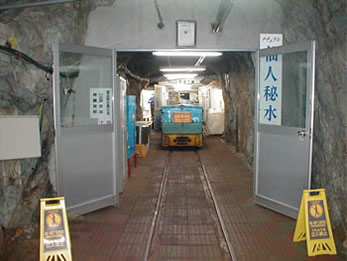 |
(Mineral water production) In the tunnels of the Kamaishi Mine, water, which is purified and refined through natural filters such as magnetite deposits, limestone and granite, springs through clefts in the rocks. Our consolidated subsidiary Kamaishi Kozan Co., Ltd. bottles and distributes the natural mineral water under the name "Sennin Hisui." |
|---|---|
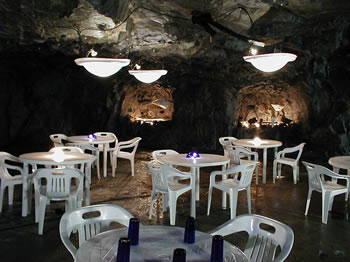 |
(Acoustic testing) Our underground acoustic laboratory, Granite Hall, was created to obtain basic data for the construction of granite music halls by expanding an existing space in the tunnel that was once used as an office and resting area. The data showed that this granite-covered space has a low sound absorption coefficient and long reverberation, with the result that the laboratory was later used for concert performances and recording. |
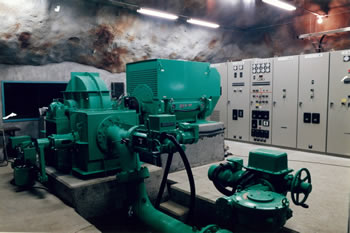 |
(Hydroelectric power generation) Further into the tunnel behind the underground acoustic laboratory, there is a dam for underground hydroelectric power generation using the iron ore mining site. Having installed water pipes from the dam to a generator located at 230 meters above sea level, we generate about 176 kilowatt-hours of power on average 24 hours a day by taking advantage of the 320-meter drop. The underground power station started operation in fiscal 1995 and was certified in May 2013 as a facility for the Feed-in Tariff (FIT), which was introduced in July 2012 based on the Act on Special Measures Concerning Procurement of Electricity from Renewable Energy Sources by Electricity Utilities. Currently, we sell the electricity generated based on the FIT unit price. |
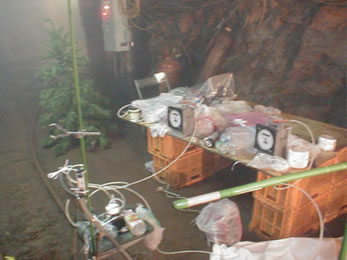 |
(Cloud physics research) Artificial clouds were generated in a 430-meter-high pit in the Kamaishi Mine to measure precipitation particles inside the clouds with the aim of clarifying the phenomenon of rain and cloud generation. The research contributed significantly to atmospheric physics, meteorology, heavy rain forecasting, acid rain research and other areas related to addressing global environmental issues. |
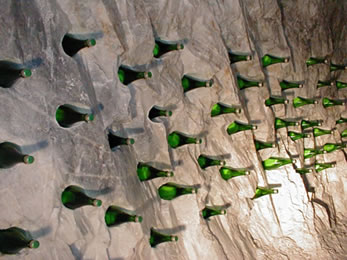 |
(Sake storage) Japanese sake was once stored in the tunnel to take advantage of the latter's environmental features, namely, the cool temperature and total darkness when the lights were turned off. Around 3,000 bottles of sake per year were stored for three to five years before being shipped as a premium beverage, since they matured with a rich and mellow flavor. |
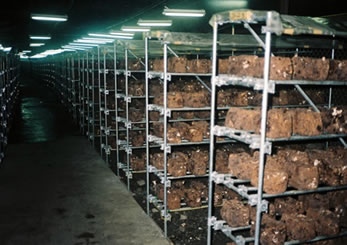 |
(Growing of mushrooms) The temperature inside the Kamaishi Mine tunnels remains constant at around 10⇔ to 13⇔ throughout the year, and relative humidity is at a high level of between 80% and 95%. Drawing on these environmental advantages, a mushroom cultivation trial was conducted. |
Copyright(C) Nittetsu Mining Co.,Ltd. All rights reserved.